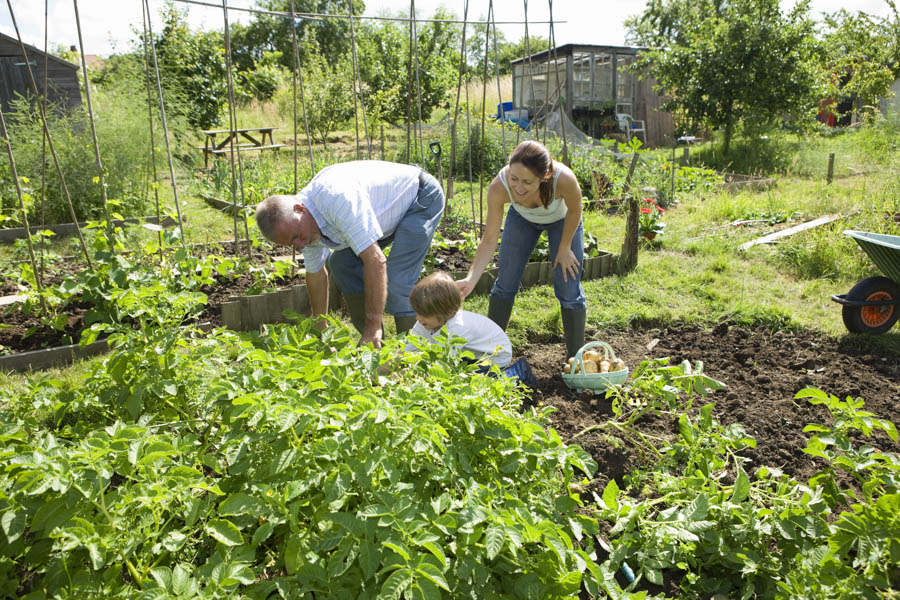Down and Dirty 7: Mudpies and Fizz: Easy Home Tests for Soil pH

Down and Dirty Southern California Gardening
A weekly GardenZeus article series to help gardeners succeed in Southern California’s unique climates and growing conditions.
Post 7: Mudpies and Fizz: Easy Home Tests for Soil pH
GardenZeus receives commissions for purchases made through links in this post.
Concerned that your soil pH may be high or low? Use these two easy home tests to find out.
It’s important to use distilled water when preparing soil mixes for pH testing at home because it has a neutral pH and won’t affect test results. Most municipal water is alkaline and will skew your results. Distilled water can be purchased at most grocery stores that sell bottled water.
Test 1: Is your soil acidic, alkaline, or neutral? Use this simple home test to find out. Note that this test will not give you a specific pH reading, just a general idea of alkalinity or acidity.
Take a soil sample of a few tablespoons from 2 to 6 inches below your soil’s surface. Avoid sampling the top inch or two of soil as pH may be more variable within the “O” layer near the soil surface, and may be different than the pH of mineralized topsoil that we want to test a few inches down. Remove and keep out mulch, surface amendments, fertilizers, compost, organic matter such as roots and leaf litter, and anything else other than soil from your sample as much as possible. The soil sample can be dry or wet.
Add vinegar. Put your soil sample into a clean glass or ceramic container and add 2 or 3 tablespoons of vinegar. If the soil fizzes or bubbles, this indicates soil alkalinity. Most soils in Southern California are alkaline to neutral.
If no fizzing with vinegar, make a small mudpie. Put a new soil sample into a clean glass or ceramic container, and add enough distilled water to make a soft, very-wet mudpie, about the consistency of thin oatmeal or a semi-melted milkshake. Add a tablespoon or two of baking soda. If the mudpie fizzes or bubbles, this indicates soil acidity.
If neither vinegar nor baking soda produces fizzing, this suggests that your soil sample is neutral or near-neutral, with a pH of about 7.0.
Test 2: Look Ma, No Lab Test – Measuring Approximate Soil pH at Home Using pH Strips
For this test you will need aquarium pH test strips, litmus paper, or any pH testing paper or strips in addition to distilled water. GardenZeus recommends aquarium pH test strips as an inexpensive, easily available, and reasonably reliable option.
Take a soil sample of a few tablespoons from 2 to 6 inches below your soil’s surface (see above for more information and instructions).
Make a small mudpie. Put a new soil sample into a clean glass or ceramic container, and add enough distilled water to fill the container to about the level of the soil in your container. Mix thoroughly to make a wet mud, adding more distilled water if necessary.
Leave the mudpie to sit for 30 to 60 minutes to allow soil particles to settle, so that a layer of water forms above the mud. Tip the container to allow water to gather at one side, and dip your pH strip into the water. Compare the color on the pH strip to the pH color key provided with the pH strips.
It’s also possible to test the pH of thin, very-wet mud. Make a mudpie using distilled water (see above), immerse your pH strip into the mud, then rinse the pH strip in distilled water before comparing it to the color key.
Try testing your soil with pH strips repeatedly over time and in different areas of your garden or landscape. Extreme results are probably errors or variation within a limited soil area. The average of multiple tests over time tends to be the most accurate.
GardenZeus recommends testing soil pH separately for every planting area and in any new planting beds both before and after amending. Soil pH can vary significantly within a single yard or garden. Many factors or conditions in soil can affect pH and produce a surprising or varied result within a small soil area, from prior anaerobic conditions and chronically wet areas, to a history of pets or wild animals urinating in an area, to detergents or chemicals that may have been dumped or drained into soil.
“Down and Dirty Southern California Gardening” is a weekly GardenZeus article series in which expert Darren Butler shares more than 20 years of experience about what works and what doesn’t with gardening in Southern California:
Post 6: No Tomato Harvest When You Did Everything Right
Post 8: Tips for Testing Soil pH at Home with a Soil pH Meter
All articles in this series: Down and Dirty Southern California Gardening
GardenZeus Calfornia climate zones
Enter your California zip code for customized advice by plant